In a world of high-powered gaming consoles and photorealistic graphics, the Playdate by Panic is a breath of fresh air. Particularly for the older generation of gamers who have gone from 2D side-scrollers taking up 16MB of memory to Hollywood blockbuster games spanning into the hundreds of GB's.
I've owned the Playdate now for several months and I still pick it up every single day for quick 10-15 minute bursts of dopamine. There's alot to like about this tiny yellow brick of gaming goodness, but it might not be for everyone.
Read my full breakdown below to see if you should add it to your shopping list soon.
Hardware Design: Pocket-Sized Perfection
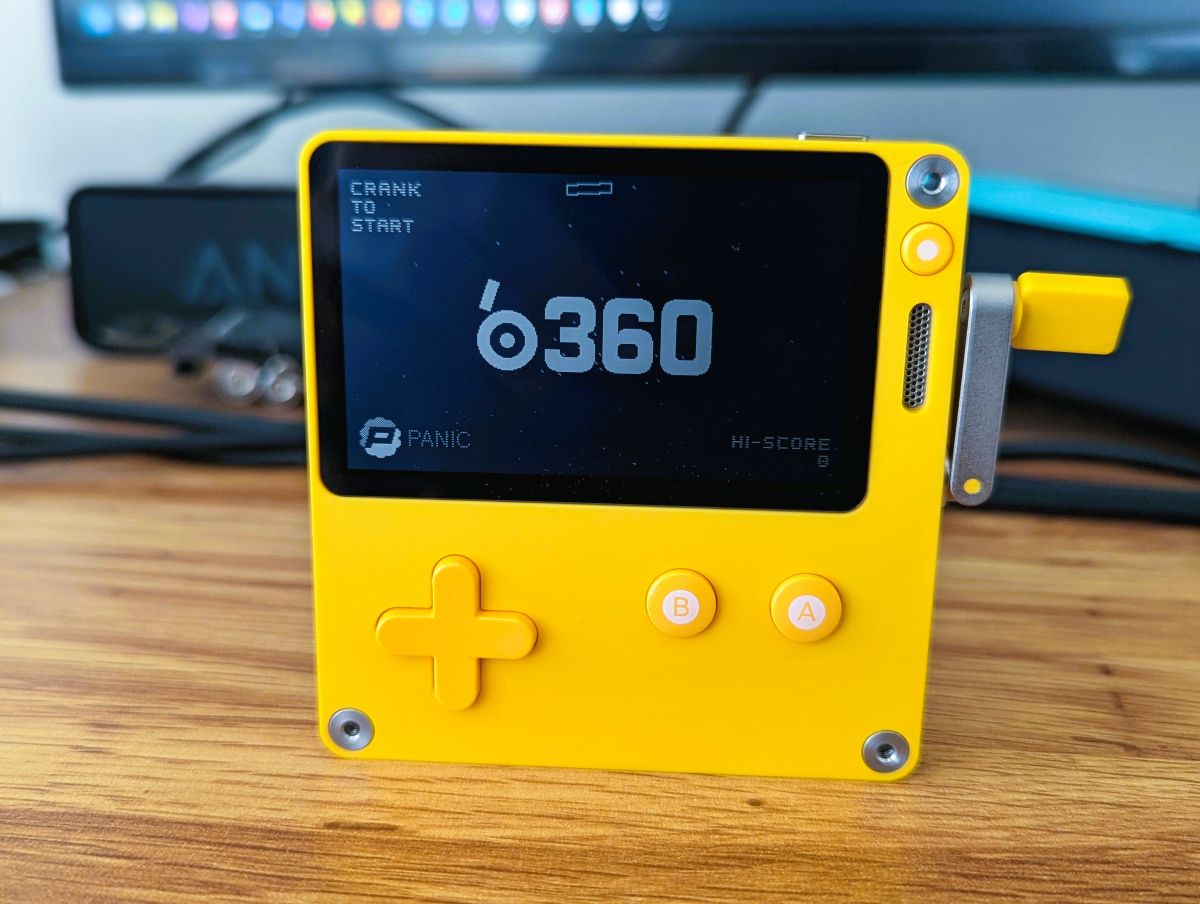
I'll start off by saying that my favorite console of all time is the Game Boy Advance. The games were amazing, the added shoulder buttons greatly improved playability and you could toss it into your backpack without a care, because that thing was a brick.
The Playdate's physical design is an immediate standout. Measuring roughly 3 × 3 inches and less than half an inch thick, it's remarkably compact—easily sliding into a pocket without the bulk of other portable consoles.
The bright yellow casing isn't just eye-catching though, it's constructed from high-quality plastic that has a rubberized texture that feels great in the hand.
The build quality is impressive, with satisfying clicky buttons and a d-pad that offers precise directional control. The star of the show, of course, is the crank on the right side—a novel control mechanism that folds flat against the device when not in use.
The crank rotates smoothly with just the right amount of resistance, making it both fun to fidget with and functional as a game input. And it snaps into its housing slot with equally as much satisfaction.
Every hardware element feels intentionally designed, from the slightly textured surface that improves grip to the thoughtfully placed speaker grills. It's clear the designers at Panic cared deeply about creating a device that feels special from the moment you hold it.
There's no external memory slot, but I'm personally willing to overlook that because the games themselves do not take up that much space. I can easily see several 100 games fitting comfortably on the device.
Technical Specs
The Playdate may look tiny and unassuming, but under the hood it packs some neat tricks:
| Category |
Details |
| Battery |
14 days standby clock - 8 hours active |
| CPU |
168 MHz Cortex M7
SDK supports Lua, C |
| Storage |
16 MB RAM
8 KB L1 Cache
4 GB Flash |
| Size |
76 × 74 × 9 mm |
| Included |
Playdate
USB-C to A Cable
User Guide |
| Wireless |
802.11bgn 2.4GHz Wi–Fi
Bluetooth® |
| Sound |
Built-In Mono Speaker
Stereo Headphone Jack
Condenser Mic + TRRS Mic In |
| Display |
400 × 240 1-bit |
| Inputs |
D–Pad
A + B
Sleep + Menu
3-Axis Accelerometer
Crank |
| Cost |
$229
Plus Taxes & Shipping |
Display: Monochrome Magic
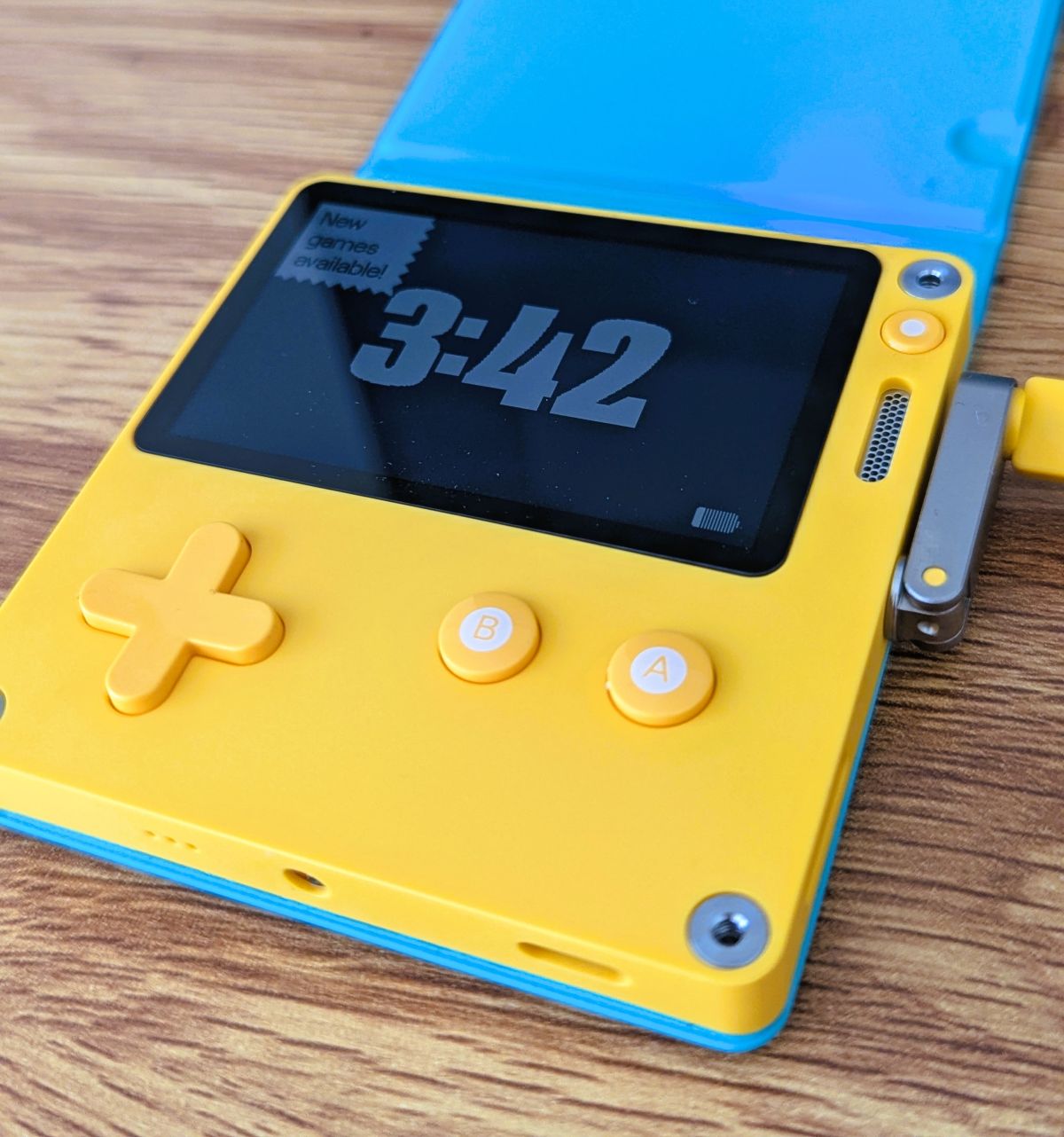
The display on the PlayDate is hard to describe. It's both super minimalistic, but also surprisingly animated. It really is one those things that you have to see to believe.
When you first fire up your Playdate, you'll get a fanciful animation that showcases the screens capabilities and it's fantastic. It's fun, it's animated and it makes use of every single pixel on the screen.
The screen itself is 2.7 inches with a 400 x 240 resolution and no backlight. In dark conditions, it is kind of hard to play to some extent. But under bright lights, the screen just pops out looking very crisp.
The display's high resolution makes pixelated graphics look incredibly sharp, with excellent contrast between black and white elements.
The lack of backlight does mean nighttime playing requires an external light source, but this limitation feels like part of the console's charm rather than a serious drawback. And this limitation also helps to extend battery life greatly.
User Interface & Operating System: Simple Yet Sophisticated
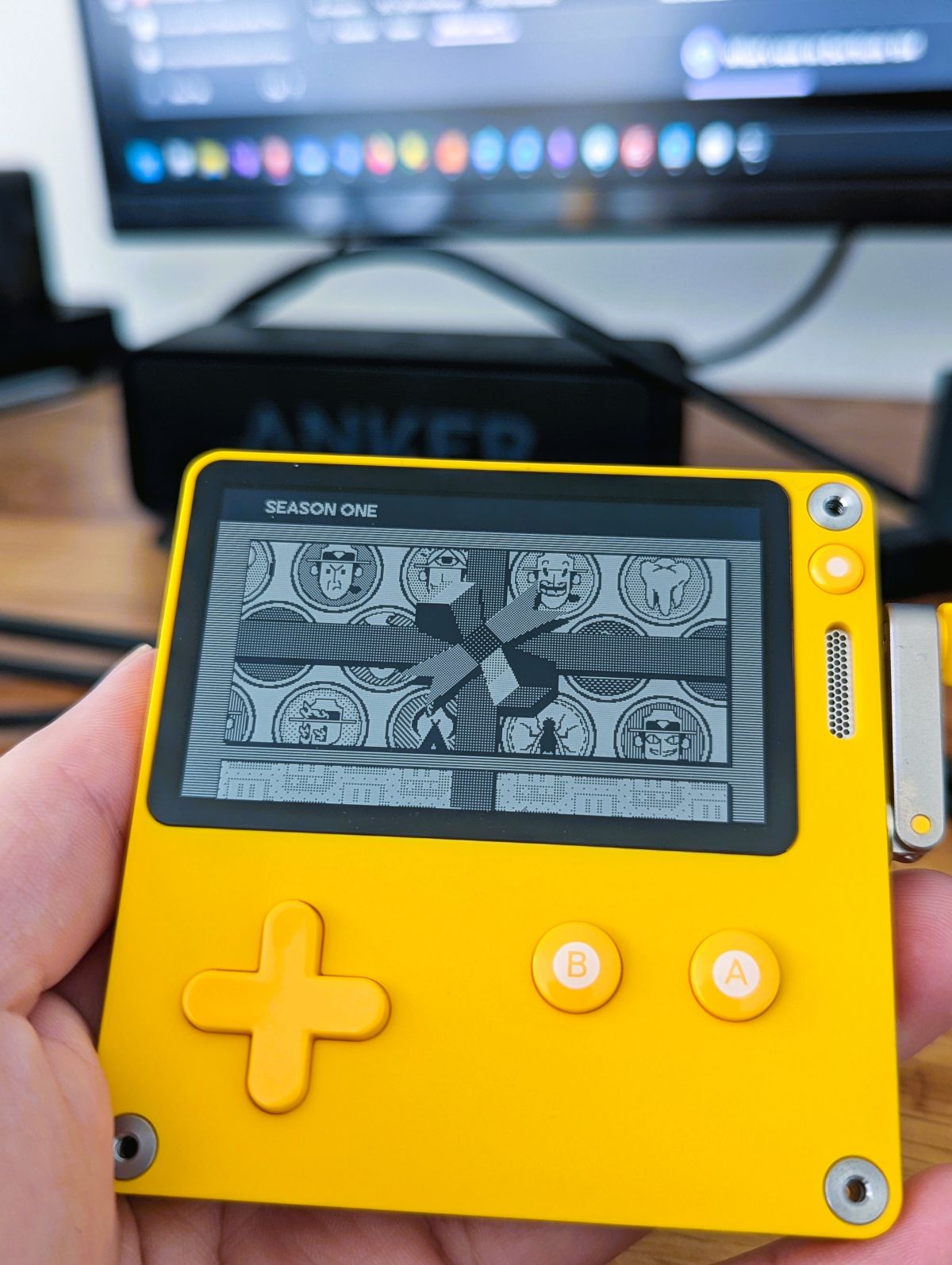
Navigating the Playdate's operating system is intuitive and fluid. The home screen presents your games in a scrollable list, while a simple menu system handles settings and device management.
The OS receives regular updates that have added features like a lock screen clock and improved performance. Everything loads quickly, and the whole interface feels responsive despite the device's modest processing power.
One particularly nice touch is how the system handles game installations and updates automatically when in sleep mode, ensuring you always have the latest content without manual intervention.
There is a small notification light on the top of the unit that blinks whenever you have a "Season One" game available or when the game catalog is updated with new content.
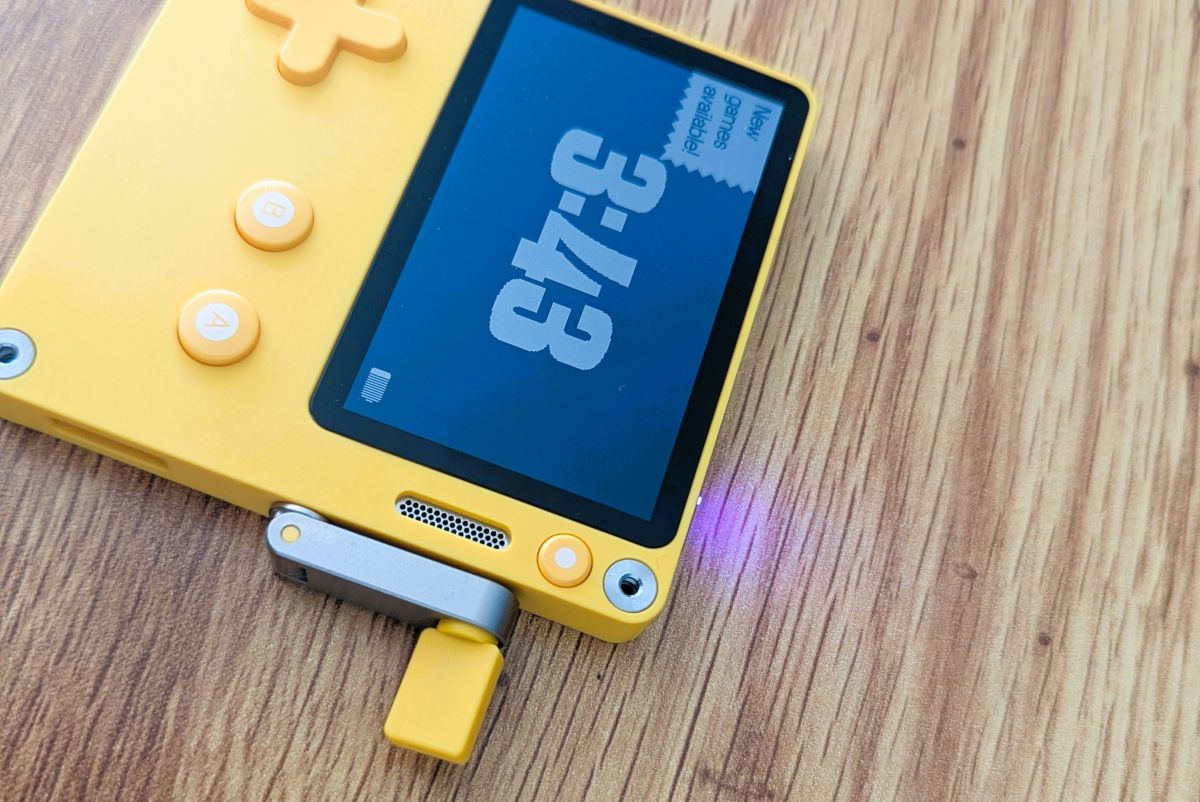
One of the best features though is that you can put your console to sleep at any point in time and the game state will continue to be saved, ensuring you can pick up right where you left off.
The Crank: Revolutionary Control
Let's talk about the crank, because this is one of those features that sounds like it makes no sense at first, but then you play your first crank-enabled game and suddenly everything clicks.
The side-mounted crank isn't just a gimmick. It's a genuinely innovative control mechanism that enables unique gameplay mechanics impossible on traditional controllers.
Some games use it for precise rotational control—like adjusting the angle of a golf swing or navigating a character through a maze. Others use it for timing-based challenges or to simulate real-world actions like winding a music box or reeling in a fishing line.
It reminds me of how Nintendo DS games cleverly used the stylus, dual screens and microphone as game control mechanisms.
The physicality of cranking adds a tactile dimension to gaming that button presses can't replicate. There's something inherently satisfying about the analog control it provides, even when used for simple functions.
Not every game utilizes the crank, but those that do often create experiences you simply can't find elsewhere. It's a perfect example of how hardware limitations can spark creative solutions.
Game Library: Season-Based Surprises
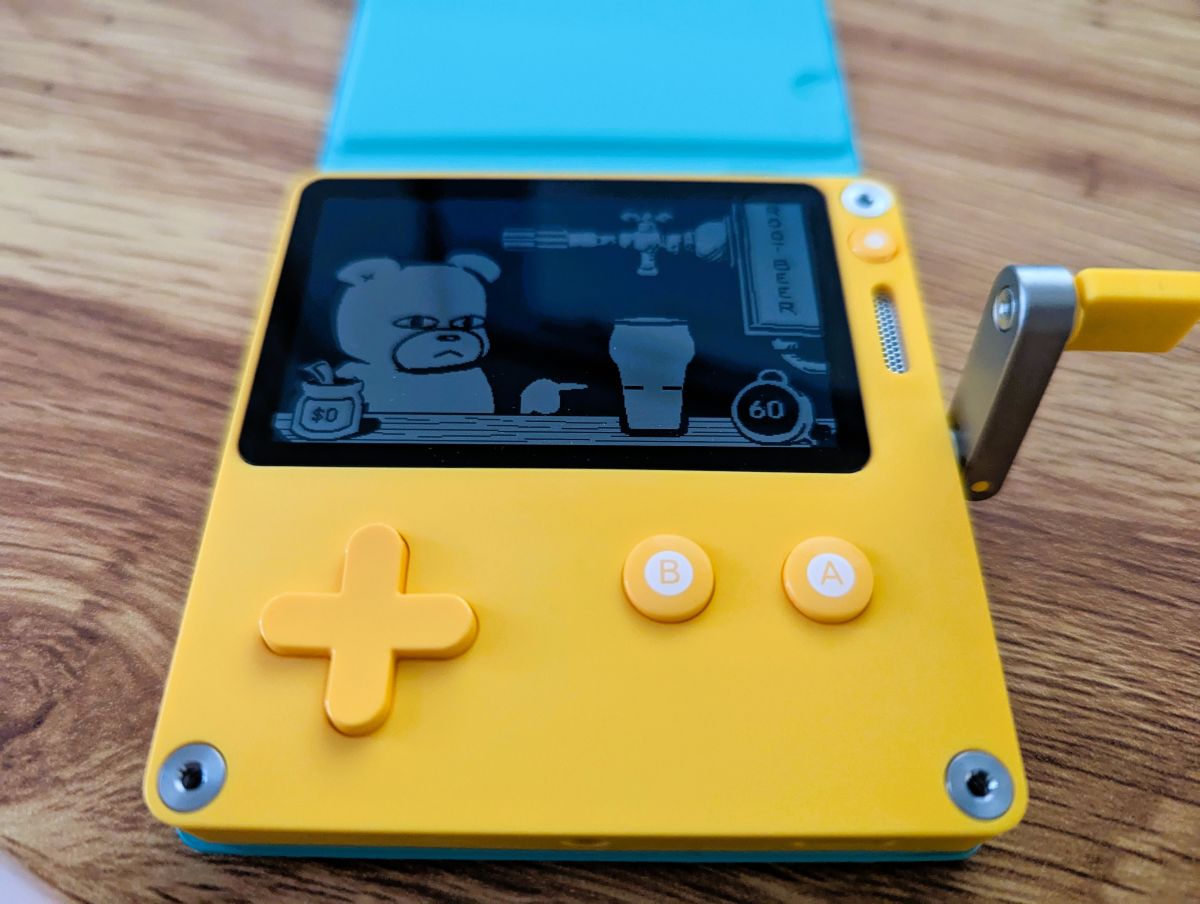
The Playdate's approach to game distribution is as unique as its hardware. When you first purchase the console you get a "Season One" of games. This includes 24 games that get delivered to your device over the span of 12 weeks.
Your can override this time limitation and get every game all at once however, but where's the fun in that.
The games come in as gift-wrapped icons in your library and once you unwrap them they install in minutes. It's a great mechanism and really helps to ensure you don't get bored of the system for some time (at least 12 weeks).
The games themselves are developed by notable indie creators and range from quick arcade-style experiences to more substantial narrative adventures.
A few standouts include:
- Crankin's Time Travel Adventure: A puzzle game where you control time by rotating the crank
- Casual Birder: A quirky photography adventure with RPG elements
- Zipper: A challenging arcade game testing your reflexes and coordination
- Executive Golf DX: A surprisingly deep golf simulator utilizing the crank for swing control
Beyond the official season, there's a thriving community of indie developers creating and sharing games through "sideloading" (installing games from outside the official store).
Many of these fan-created titles show incredible creativity within the platform's constraints. When you're only given so many resources to work with, developers tend to get creative.
The quality of games varies, but each offers something interesting—whether it's a clever use of the crank, a striking visual style, or an innovative gameplay concept. The limited control scheme and display technology don't restrict creativity but rather seem to enhance it by forcing developers to think differently.
Battery Life: Surprisingly Long-Lasting
The Playdate's battery performance exceeds expectations for such a small device. In typical usage patterns (playing for 30-60 minutes daily), it easily lasts a week between charges. More intensive sessions naturally drain it faster, but even then, you can expect 6-8 hours of continuous play.
The device enters a deep sleep mode when not in use, preserving battery life while still maintaining connectivity for game deliveries. Just sitting in idle mode, the battery tends to last several weeks, at least on mine. Mileage may vary.
Charging is handled via USB-C, with a full recharge taking approximately two hours.
Audio: Small Speaker, Big Personality
Despite size constraints, the Playdate's mono speaker delivers impressive audio quality. Sound effects are crisp, and the chiptune-style music that accompanies many games sounds delightful through the tiny speaker.
The audio has a distinctive character that complements the visual aesthetic perfectly—modern enough to sound clear while still evoking nostalgia for classic handheld gaming sounds.
There's also a standard 3.5mm headphone jack, which is great to see in 2025.
Pricing
The Playdate gets alot of heat online due to its pricing. As of the writing of this article, it retails for $229. I personally bought it while it was $199 and even then, it did take me a while to commit and click on the purchase button.
The main reason why there's contention though is because to an outsider looking in, the Playdate looks incredibly minimal. There's no color, the CPU and GPU isn't going to run high-resolution games anytime soon and it's relatively tiny.
However, neither was the original Game Boy and that went on to become one of the most played consoles of all time.
What most people miss with pricing is that you're getting more than just the console. For one, you're getting 24 games made by real developers who spent hundreds of hours laboring over their craft.
As a developer though, I'm personally excited about the robust SDK, the PC emulator and Pulp, the browser based game designing tool that Panic offers. This makes the Playdate not just a fun gaming console, but also a game development platform that any developer can get into quickly.
The company has also been great in providing firmware updates and maintaining communication with users about the platform's future. This level of support inspires confidence that the Playdate won't be abandoned as a short-lived experiment.
Final Verdict: 4.5/5.0
The Playdate is not for everyone. If you demand cutting-edge graphics or extensive game libraries, this isn't the console for you. However, if you appreciate clever design, indie gaming innovations, and experiences that prioritize creativity over technical specifications, the Playdate delivers something truly special.
What could have been dismissed as a novelty has proven itself as a thoughtfully designed platform that encourages both players and developers to think differently about what games can be. Its limitations aren't weaknesses but intentional constraints that foster creativity.
The combination of excellent hardware, the innovative crank controller, and a diverse library of clever games makes the Playdate an easy recommendation for indie game enthusiasts, designers who appreciate minimalist aesthetics, and anyone looking for gaming experiences that break from convention.
In a gaming landscape often focused on more—more power, more pixels, more features—the Playdate finds success by embracing less, proving that sometimes the most memorable experiences come in small packages with a crank on the side.